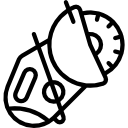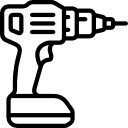- اتو لوله سبز
- اره پروفیل بر
- اره عمودبر (اره چکشی)
- اره فارسی بر
- اره گرد (اره دیسکی)
- اره مویی
- اره میزی
- اره نواری (گوشت بری)
- اره همه کاره (افقی بر)
- ابزار چندکاره
- بالابر برقی
- بتن ساب و موزایک ساب
- بکس برقی
- پیچگوشتی برقی
- پیستوله برقی
- بیسکویت زن
- چکش تخریب
- دمنده/مکنده (بلوور)
- دریل بتن کن
- دریل ساده (سرکج)
- دریل ستونی
- دریل ضربه ای/چکشی
- دریل مغناطیسی (مگنتی)
- دریل نمونه بردار (کرگیر)
- دستگاه جوش
- رنده و فرز نجاری
- سنباده برقی
- سشوار صنعتی
- سنگ دوطرفه (چرخ سنباده)
- سنگ و پولیش
- شیارزن و مرمربر
- فرز مینیاتوری
- فرز انگشتی
- میخکوب و منگنه کوب
- مینی سنگ
Avoiding Common Plumbing Code Violations – Protecting Your Home and Investment
Plumbing systems, hidden behind walls and beneath floors, are often overlooked until problems arise. While many homeowners attempt DIY repairs to save money, shortcuts can lead to serious code violations. These violations, often unintentionally committed, can compromise the safety and efficiency of your home’s plumbing.
One common pitfall is an incorrect slope of drain lines. This seemingly minor detail significantly impacts wastewater flow and can result in clogs and backups. Another frequent blunder is making an illegal connection to the sewer line or water supply, potentially contaminating potable water sources. These unpermitted modifications circumvent established safety measures and inspection protocols.
Beyond functional issues, many DIY plumbing projects introduce a safety violation. Improper grounding of metallic pipes, for example, creates an electrocution hazard. By understanding and avoiding these prevalent mistakes, homeowners can maintain a safe and compliant plumbing system and avoid costly repercussions.
Ignoring Ventilation Requirements in Drainage Systems
One of the common plumbing code violations involves neglecting proper ventilation in drainage systems. Adequate ventilation is necessary to ensure that wastewater flows smoothly through pipes, preventing pressure build-up and facilitating drainage. Without it, homeowners may experience slow drainage, backups, or foul odors.
A typical mistake arises from improperly installed or missing vent pipes, which can lead to a phenomenon known as “p-trap mistake.” This occurs when the water seal in the p-trap is compromised, allowing sewer gases to enter living spaces. Installing proper venting ensures that the p-trap maintains its water barrier, safeguarding indoor air quality.
Homeowners should familiarize themselves with local codes and standards concerning drainage. Working with a qualified plumber can help avoid these violations and ensure compliance with ventilation requirements, ultimately contributing to a healthier home environment.
Improper Sizing of Water Supply Pipes
One frequent plumbing code problem arises from incorrectly sized water supply pipes. This https://sweenyplumbingco.com/ can manifest in several ways, often leading to reduced water pressure and inadequate flow rates at fixtures throughout the house. When pipes are too small for the demand placed upon them, multiple fixtures operating simultaneously (e.g., shower and dishwasher) will suffer from noticeably diminished performance. This is not just an inconvenience; it also creates conditions that can lead to a backflow risk.
Furthermore, improper sizing can create a venting issue due to increased pressure fluctuations within the water system. Addressing this often involves significant rework of the existing plumbing, including replacing large sections of piping. Contributing factors often include: wrong pipe type used; installation without a no permit; failing to account for future expansion of the plumbing system; or simply relying on guesswork instead of proper calculations. The repercussions of these errors extend beyond mere inconvenience; they present a safety violation for the home’s water supply, potentially compromising water quality and creating conditions for water hammer, which can damage pipes and fixtures over time. Ensuring proper pipe sizing during installation or renovation is extremely important for a reliable and code-compliant water supply system.
Neglecting Backflow Prevention Measures
Many homeowners inadvertently overlook backflow prevention measures, creating significant risks for their water systems. The absence of proper devices can lead to the contamination of clean water supplies through illegal connections. This not only poses health hazards but may also violate local plumbing codes.
Homeowners often fail to secure the necessary permits for backflow prevention installations, assuming these measures are optional. However, without the right safeguards in place, the likelihood of backflow events increases, leading to serious safety concerns.
Using the wrong pipe type for backflow prevention systems can exacerbate the problem, making it easier for contaminants to enter the water supply. Ensuring that the installation complies with plumbing codes is essential to mitigate backflow risk effectively.
Using Non-Permitted Materials in Plumbing Installations
Homeowners often make the mistake of using non-permitted materials in their plumbing systems, which can lead to significant problems. The plumbing code specifies appropriate materials to ensure both safety and compliance. Using the wrong pipe type or making illegal connections can result in leaks, structural damage, and costly repairs.
Here are common issues associated with non-permitted materials:
- Wrong Pipe Type: Using non-standard or subpar pipe materials can affect the longevity and performance of your plumbing. For example, using PVC pipes in hot water applications can lead to premature failure.
- Illegal Connection: Connecting different types of plumbing materials without proper fittings can create weak points in the system, risking leaks and failing to meet code requirements.
- P-Trap Mistake: Installing a trap that is not compliant with local codes can lead to drainage issues and bad odors seeping into the living space.
- Venting Issue: Utilizing incorrect or non-permitted venting materials can cause blockages or backflow risks, affecting the entire drainage system.
- Incorrect Slope: A drainage pipe installed with the wrong slope can hinder proper flow, leading to clogs and inefficient drainage.
Failing to obtain a permit or using non-permitted materials can have serious repercussions, leading to not just code violations, but also increased backflow risks and more extensive damage down the line. Always consult with a licensed plumber and adhere to local regulations to avoid these pitfalls.




